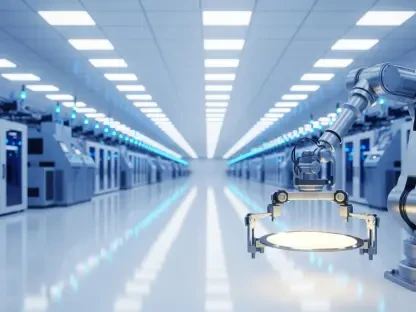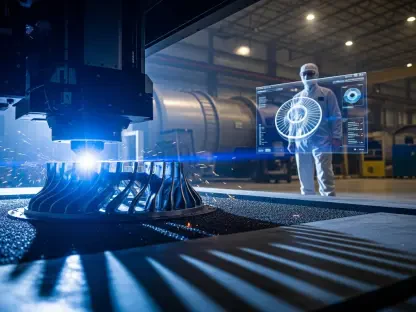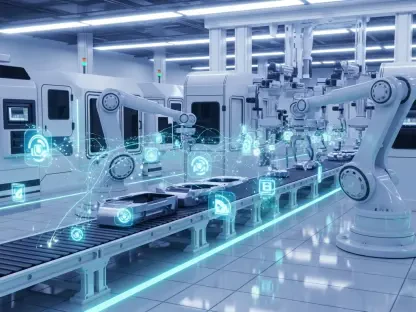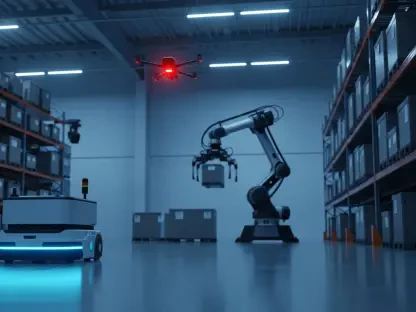In recent years, the intersection of artificial intelligence and traditional woodworking has sparked a fascinating dialogue within the industry. As digitalization permeates every aspect of manufacturing and artisanal craft, the role of AI in woodworking becomes more prominent, leading to significant transformations. This shift raises important questions about whether AI is enhancing human creativity or fundamentally altering the craft. As seen in major industry events like LIGNA, this exploration of technology versus tradition showcases the evolving landscape of woodworking and the potential for AI to coexist with and even augment human artistry.
Transformative Role of AI
Technological Integration and Craftsmanship
Artificial intelligence has begun to redefine the craftsmanship inherent in woodworking by introducing advanced technologies that seamlessly blend traditional methods with modern capabilities. From AI-powered design tools to automated manufacturing processes, technology is shaping how artisans approach their craft, enhancing precision and efficiency without compromising creativity. These tools enable workers to visualize complex designs with accuracy previously unattainable, combining the intuitive creativity of human artisans with the robust analytical capabilities of machine learning algorithms. AI’s integration into woodworking facilitates innovation by offering new techniques and possibilities to explore, allowing professionals to push the boundaries of traditional methods and create works of art that were once deemed impossible. At industry events like LIGNA, this dynamic is showcased through live demonstrations that highlight the potential of AI to empower artisans in their creative pursuits, underscoring the synergy between humans and machines.
Bridging AI and Human Creativity
As woodworking evolves with AI’s influence, the focus is also placed on maintaining the essence of human creativity that defines craftsmanship. The fear of automation overshadowing human artisanship is mitigated by AI’s role as a collaborative tool rather than a replacement. The technology acts as a catalyst for creativity, allowing individuals to experiment and innovate with guidance from AI-driven insights. By harnessing AI’s capabilities, artisans can refine their skills, improve decision-making, and enhance the overall artistic process. This reciprocal relationship between humans and AI underscores the importance of education and training, enabling artisans to leverage technology effectively while preserving traditional techniques. As industry trends veer towards sustainability and resource management, AI helps artisans explore eco-friendly methods, marrying creativity with responsible practices. This balance ensures that AI complements rather than competes with human ingenuity, offering a source of inspiration and support rather than a deterministic substitute.
Revolutionizing Product Development
Innovation and Market Dynamics
The application of AI in product development within the woodworking sector significantly influences market dynamics, setting the stage for unparalleled innovation. AI-driven systems are accelerating the development of new woodworking products through predictive analytics and automated prototyping. These technological advancements allow manufacturers to anticipate consumer needs and swiftly adapt designs accordingly, ensuring their offerings remain competitive and relevant. Events like LIGNA have highlighted how AI contributes to product launches, with over 900 new products unveiled, demonstrating how the technology enhances traditional industry methods. By streamlining design processes and enabling rapid prototyping, AI equips artisans and manufacturers to redefine what is possible in woodworking, paving the way for groundbreaking solutions that are both efficient and sustainable. This impact fosters a dynamic market where creativity thrives, driving growth and evolution across the global woodworking sector.
Sustainability and Resource Management
AI’s role in revolutionizing woodworking is further exemplified through its contribution to sustainability and resource management. As ecological concerns persist, the industry recognizes the need to adopt practices that protect and preserve the environment. AI aids in optimizing material usage, reducing waste, and facilitating the creation of eco-friendly products that respond to consumer demand for greener alternatives. Events and discussions at platforms like LIGNA introduce formats such as LIGNA.Circular, promoting a circular economy that emphasizes resource efficiency and environmental sustainability. By integrating AI, woodworking professionals are equipped to explore sustainable production methods, aligning their creative processes with ecological mandates, ultimately positioning wood as a renewable material central to this transformative journey. Thus, AI’s influence extends beyond creativity, supporting a future-focused approach to woodworking that values sustainability as both a necessity and an opportunity for innovation.
Future Prospects and Challenges
Navigating Technological Complexity
As AI continues to integrate into woodworking, the industry faces challenges related to technological complexity that require adaptation and strategic planning. With advancements in machine learning and connectivity, professionals must grapple with navigating these changes to ensure seamless operation. The shift demands a deeper understanding of AI-driven processes, necessitating continuous education and skill development within the workforce. At events like LIGNA, discussions emphasize the importance of training artisans to harness the full potential of AI, ensuring they are well-equipped to deal with new technologies without sacrificing traditional methodologies. Balancing this complexity is crucial as the industry advances, offering opportunities to synergize human insight with AI’s capabilities, maintaining the integrity of craftsmanship that has defined woodworking for centuries.
Enhancing Global Partnerships
Beyond technological adaptation, AI fosters the enhancement of global partnerships within the woodworking industry, encouraging international collaboration and connectivity. The representation of diverse visitors at prominent exhibitions such as LIGNA illustrates this trend, demonstrating increased engagement from global entities eager to explore AI-driven solutions. AI facilitates communication and partnership through digital platforms, enabling collaborative efforts that transcend geographical barriers. For woodworking professionals around the world, this connectivity translates to shared knowledge and expertise, leading to collective innovation and growth. As AI continues to shape the industry’s future, these global partnerships are paramount, serving as conduits for exchanging ideas and fostering mutual advancement geared towards sustainable and creative practices.
AI and Creativity in Woodworking: New Directions
The blend of artificial intelligence and traditional woodworking has ignited a compelling conversation within the woodworking community in recent years. As we dive deeper into the digital age, AI is beginning to influence every facet of manufacturing and artisanal projects. This technological incursion is redefining how woodworking is perceived and executed, prompting significant changes in the industry. A key discussion point centers around whether AI is merely a powerful tool that enhances human creativity or if it is disrupting the foundational elements of the craft itself. Events like LIGNA illustrate this intriguing dance between revolutionary technology and time-honored traditions, reflecting the shifting landscape of woodworking. The challenge and opportunity lie in determining how AI can seamlessly coexist with human skill, expanding the horizons of artistry rather than overshadowing it. Such advancements not only reveal the potential for AI to collaborate with artisans but also highlight the broader narrative of technology’s role in creative fields.









